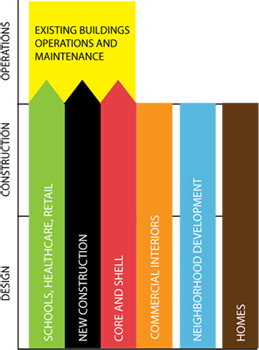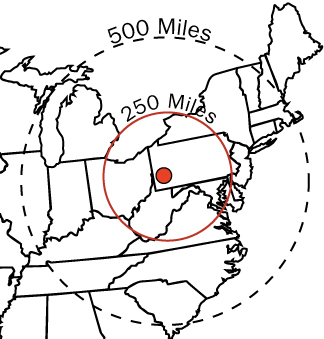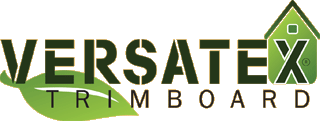LEED Green Building Rating System
Background
Leadership in Energy & Environmental Design (LEED) is an internationally recognized green building certification system providing third-party verification that a building or community was designed and built using strategies aimed at improving performance across specific metrics. It encourages & accelerates global adoption of sustainable green building practices through the creation and implementation of universally understood & accepted tools and performance criteria.
Developed by the U.S. Green Building Council (USGBC), LEED provides building owners and operators a concise framework for identifying and implementing practical and measurable green building design, construction, operations and maintenance solutions.
LEED is used by architects, real estate professionals, facility managers, engineers, construction managers, as well as state and local governments across the country to help transform the building environment to one of sustainability.
Features
The LEED rating systems are voluntary, consensus based, and market driven. Based upon existing & proven technology, they evaluate environmental performance from a whole building perspective over a buildings life cycle, providing a definitive standard for what constitutes a green building in design, construction and operation.
The LEED rating systems are designed for rating new and existing commercial, institutional, and residential buildings.

Since VERSATEX is more of a residential product, we will focus on LEED for homes.
LEED for Homes
LEED for Homes promotes the design and construction of high-performance green homes. A green home uses less energy, water and natural resources; creates less waste; and is healthier and more comfortable for the occupants. Benefits of a LEED home include lower energy and water bills; reduced greenhouse gas emissions; and less exposure to mold, mildew and other indoor toxins.
The LEED for Homes Rating System measures the overall performance of a home in eight categories:
- Innovation & Design – Special design methods, unique regional credits, measures not currently addressed in the system and exemplary performance levels – 11 pts. (max)
- Location & Linkages – The placement of homes in socially & environmentally responsible ways in relation to the larger community – 10 pts. (max)
- Sustainability Sites – The use of the entire property so as to minimize the projects impact on the site – 22 pts. (max)
- Water Efficiency – Use of water efficient practices indoors & outdoors – 15 pts. (max)
- Energy & Atmosphere – Energy efficiency particularly in the building envelope and HVAC design – 38 pts. (max)
- *Materials & Resources – Efficient utilization of materials, selection of environmentally preferable materials & minimization of waste during construction – 16 pts. (max)
- Indoor Environmental Quality – Improvement of indoor air quality by reducing the creation & exposure to pollutants – 21 pts. (max)
- Awareness & Education – The education of homeowners, tenants and/or building managers about the operation & maintenance of the green features of a LEED home – 3 pts. (max)
*Denotes LEED categories where VERSATEX does and/or may qualify for LEED points.
The LEED for Homes Rating System works by requiring a minimum level of performance through prerequisites. The level of performance is indicated by four performance tiers according to the number of points earned.
| Certification Levels | LEED for Home Points Required |
| Certified | 45-59 |
| Silver | 60-74 |
| Gold | 75-89 |
| Platinum | 90-136 |
What specific elements within each category can VERSATEX contribute to earning LEED points?
- Innovative Design 2 – Durability Management Process (max 3 pts)
Unlike wood, VERSATEX Trimboard is impervious to moisture, insect resistant, will not rot, rust or corrode. VERSATEX requires less maintenance than wood, wood composites or fiber cement trims and does not require painting for protection. - Innovative Design 3 – Innovative or Regional Design (max 4 points)
VERSATEX’s Stealth exterior trim solutions protects the ends and edges of various siding products from moisture wicking reducing the potential for mold or mildew growth. - Materials & Resources 2.2 – Environmentally Preferable Products (max 2 pts). Use recycled content products that meet the LEED recycling specifications (0.5 pts/
component). Use products that meet the LEED emissions specifications (0.5 pts/component).
Product used within 500 miles of VERSATEX manufacturing plant in Aliquippa, PA (0.5 pts/component).

